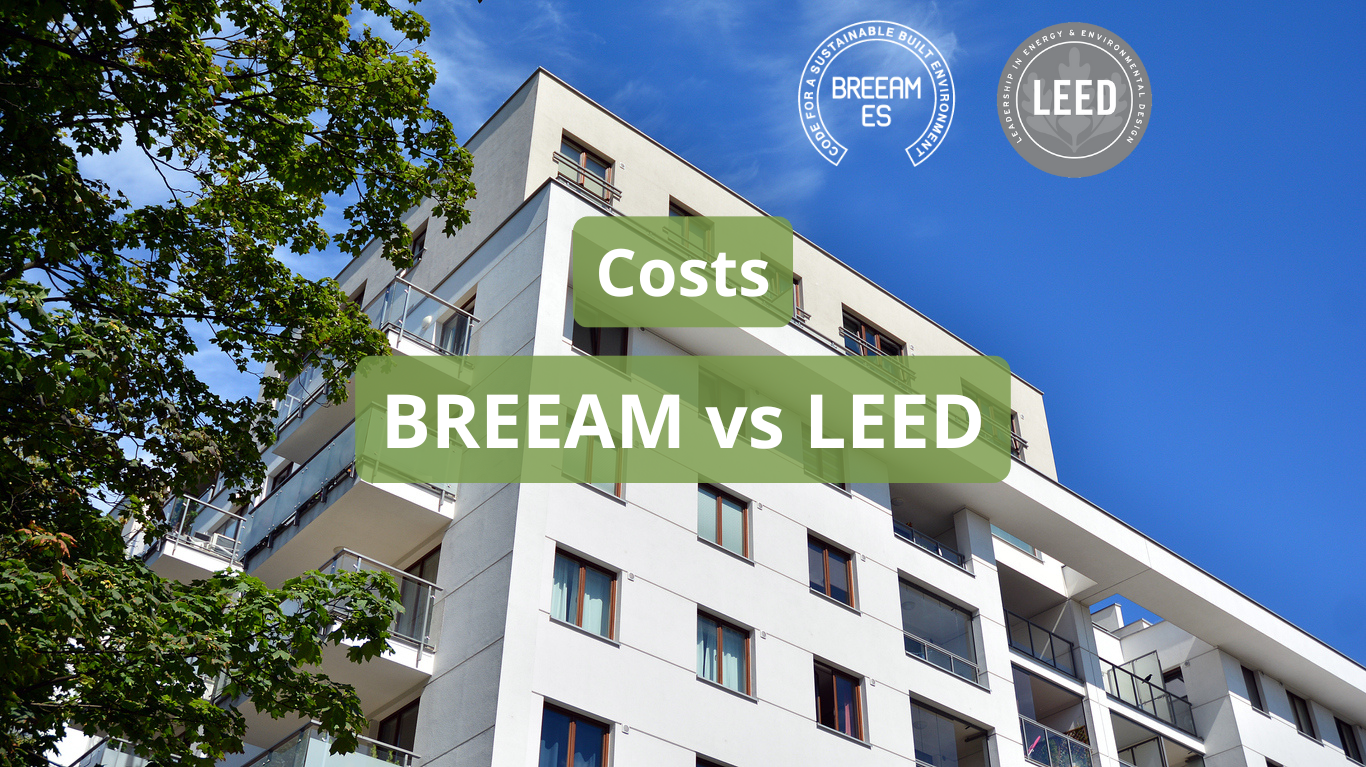When it comes to certifying a building for sustainability, it is common to wonder about the price involved in achieving the different certification levels, as well as the cost difference between BREEAM and LEED, two of the most recognised sustainability certification seals. In this article, we will focus on breaking down the expenses derived from the certification of a building, explaining the different types of necessary investments.
It is important to note that the values provided will vary according to the specific characteristics of the building, so the main purpose is to provide an overview of the typical costs associated with the certification of a sustainable building.
How are the costs of sustainability certification for a building distributed?
In general terms, when certifying a building in a sustainable manner, we find two categories of costs:
Indirect costs: these include consulting expenses, consulting extras, and the fixed certification fees of the certifier.
Direct costs: these are costs that directly affect the construction of the building, such as the installation of a BMS system or photovoltaic panels on the roof.
Although certifying a building with a sustainable seal such as BREEAM or LEED entails an additional upfront cost, over the lifetime of the building, the implementation of sustainable measures means savings in operating and maintenance costs.
According to the USGBC, the expense of certifying a building with BREEAM or LEED represents approximately 2% of the total construction cost. If we break it down according to the certification level, we get these indicative percentages:
- 0.7% LEED Certified / BREEAM Approved
- 1.9% LEED Silver / BREEAM Good
- 2.2% LEED Gold / BREEAM Very Good
- 6.8% LEED Platinum / BREEAM Excellent or Outstanding
Indirect certification costs
Indirect costs are those allocated to external management and the tasks necessary to verify that the building meets sustainability requirements.
- Consulting. Consulting costs are an essential part of the sustainability certification process. They include the fees paid to professionals specialized in sustainability and certification, who guide and advise the construction team throughout the entire process.
- Consulting extras. Besides the basic consulting costs, there are other extra services that may be necessary to address specific challenges or to maximize certification points. As more points or certification level are desired, more studies and reports must be done. As an example, a consulting extra could be the elaboration of a Life Cycle Analysis or the commissioning of the building.
- Fixed fees to the certifier. Each certifier organization, whether BREEAM or LEED, has fixed fees for the evaluation and certification of the building. These fees vary depending on the complexity of the project and the certification level sought.
The table below details the indirect costs for new construction projects, broken down by certifier seal and by the certification level sought. Again, we remind you that these are indicative prices and that the characteristics of each project will vary the budget.

* The price includes registration fees, design certificate, and post-construction certificate. Prices without VAT.
** The prices take into account that Zero Consulting has a Silver membership of LEED, so the rates are reduced.
Direct costs on site
These types of costs directly affect how the building is constructed and the construction phase. In the following table, we have compiled some of the most common expenses and additional costs in higher-level certification projects.
These types of costs vary greatly depending on the characteristics of the building and the type of project, and are therefore only intended to exemplify some of the costs in buildings where more stringent certification levels are sought.
.png?width=1600&height=1210&name=EN%20(2).png)
Conclusion
The sustainability certification of buildings involves expenses that directly or indirectly affect the construction. In order to answer one of the most common questions regarding sustainability certification, the most common costs in the process of obtaining a BREEAM or LEED certification for new construction buildings have been presented in a segregated way.
Although constructing a sustainable building may require a higher initial investment, in the long run, benefits such as reduced operational and maintenance costs, as well as compliance with environmental regulations and standards, are obtained.
If you want to certify your building and get a pre-assessment tailored to your project, you can contact us.


